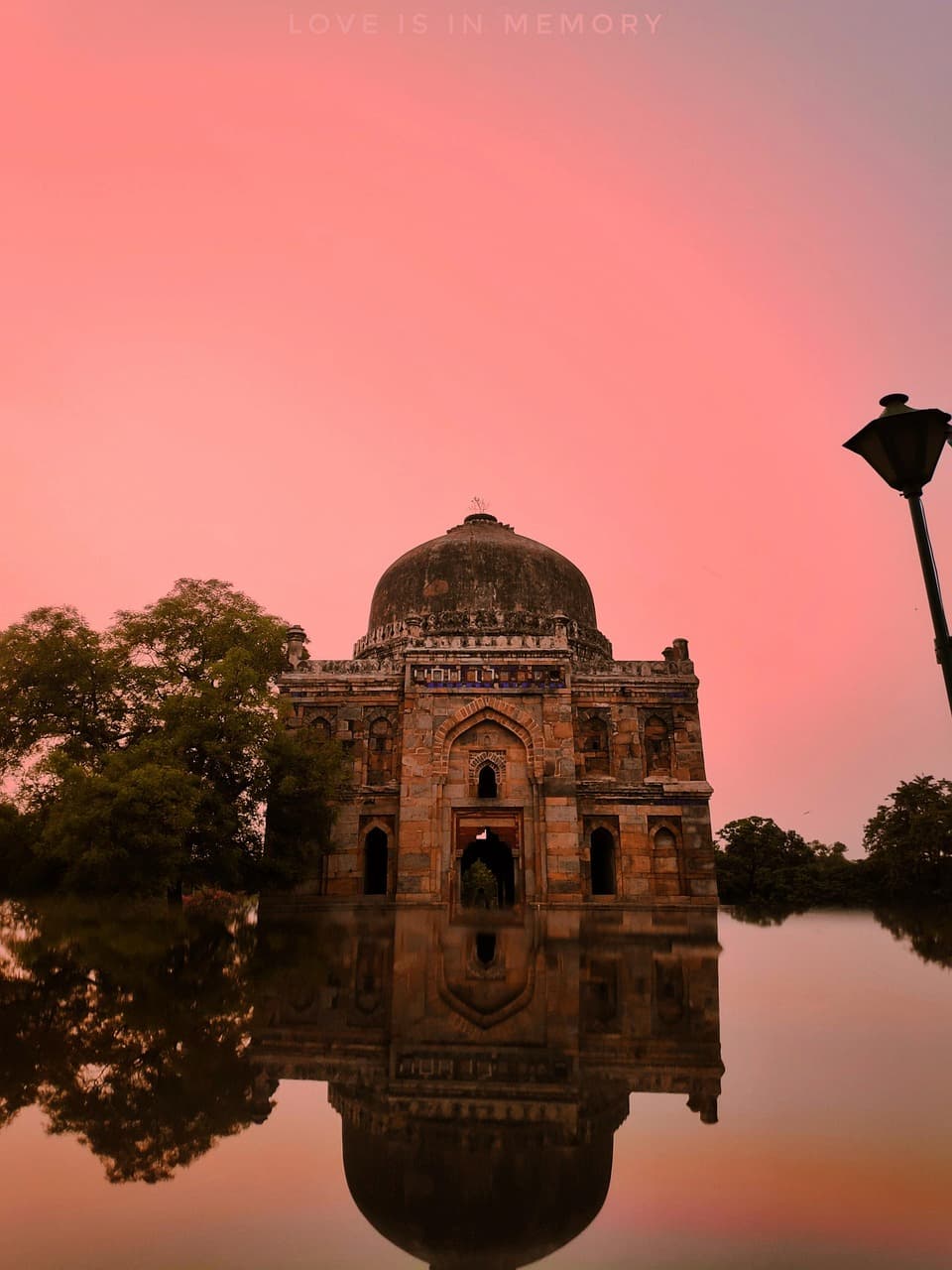Mughal Marvels: An Architectural Trail Through Pakistan’s Historic Heart
Pakistan, often celebrated for its mountainous terrain and diverse cultures, is also the custodian of one of the most awe-inspiring legacies in South Asian history—the architectural grandeur of the Mughal Empire. From majestic forts and intricate mosques to gardens that echo paradise, the Mughal influence has left an indelible imprint on the landscape of the country. For travellers and heritage enthusiasts planning a cultural getaway, a journey through the Mughal marvels of Pakistan promises a fascinating dive into the past, revealing stories etched in stone, marble, and tile.

Why the Mughals Matter
The Mughal Empire, which flourished from the 16th to the 18th centuries, was not just a political powerhouse but a cultural juggernaut. It fused Persian, Indian, and Central Asian artistic traditions to form a distinctive architectural style defined by symmetry, geometric precision, detailed ornamentation, and monumental scale. Though the dynasty spanned a wide region—including much of present-day India—the western extent of the empire lay within the bounds of modern-day Pakistan. Today, several of its cities are architectural time capsules waiting to be explored.
Lahore: The Crown Jewel of Mughal Architecture
No architectural journey through Pakistan would be complete without visiting Lahore, the cultural heart of the country and former capital of the Mughal Empire during the reigns of Akbar, Jahangir, and Shah Jahan.
Lahore Fort and Shalimar Gardens
The majestic Lahore Fort, a UNESCO World Heritage Site, is a citadel of red sandstone and marble, narrating tales of conquest and splendour. Inside its walls, visitors can marvel at the Sheesh Mahal (Palace of Mirrors), with its hundreds of tiny mirrors that sparkle in candlelight. Each section of the fort reveals different epochs of Mughal rule, from Akbar’s militaristic structures to Shah Jahan’s delicate, ornamental pavilions.
A short drive away lies the Shalimar Gardens, another masterpiece commissioned by Shah Jahan. Built in the Persian charbagh (four-part garden) style, it features cascading fountains, serene canals, and symmetrical terraces, all symbolising the concept of paradise.
Badshahi Mosque
Right across from the fort stands the Badshahi Mosque, a colossal structure built in 1673 by Emperor Aurangzeb. It remains one of the largest mosques in the world and is an extraordinary example of Mughal religious architecture. With its bulbous domes, red sandstone façade, and intricately carved white marble inlays, it’s not just a place of worship but a marvel of design and engineering.
Multan: The City of Saints and Surfaces
Multan, though often overshadowed by Lahore, played an important role during the Mughal period and is home to structures that exhibit the marriage of spiritual significance and architectural finesse.
The Tomb of Shah Rukn-e-Alam, a pre-Mughal Sufi shrine, was later patronised by Mughal rulers who preserved and enhanced its structure. While not originally built by the Mughals, its embellishments and maintenance under their reign turned it into a symbol of their commitment to religious pluralism and architectural conservation.
Multan also houses remnants of Mughal-era mosques and havelis, where colourful glazed tiles and blue pottery echo the city’s artistic traditions—many of which were cultivated under imperial patronage.
Thatta: A Forgotten Capital with Grand Relics
Located in Sindh, Thatta was once a bustling Mughal provincial capital. It may be quieter today, but its heritage monuments speak volumes.
Shah Jahan Mosque
Built in the 1640s, the Shah Jahan Mosque in Thatta is a hidden gem that showcases the richness of Islamic art under Mughal rule. Famous for its 93 domes, each constructed without supporting beams, the mosque also features some of the most intricate tile work in the Islamic world. Its acoustics are astonishing—a whisper from one corner can be heard in the opposite corner.
Makli Necropolis
Nearby lies the Makli Necropolis, one of the largest graveyards in the world, containing tombs and mausoleums from the 14th to 18th centuries. The Mughal contributions here, though less dominant, show the transition of architectural style as it merged with local aesthetics, making it a profound site for anyone interested in the evolution of South Asian funerary art.
Rohtas Fort: The Legacy of Empire and Resistance
Unlike the elegance of Lahore’s palaces or the serenity of Thatta’s mosque, Rohtas Fort, near Jhelum, tells a story of power and military strategy. Built by Sher Shah Suri but later absorbed into the Mughal stronghold, the fort is a formidable example of defensive architecture. Its massive gates and walls, built to suppress Mughal loyalists, ironically became part of their legacy.
Walking through its bastions and gates like Sohail and Kabuli Gate, you can almost hear the clash of empires and the echoes of history. The fort represents a lesser-known chapter of Mughal rule—one of conquest, consolidation, and the pragmatic integration of enemy achievements into the imperial fold.
Cultural Resonance in Modern Pakistan
Today, these Mughal marvels are more than historical ruins; they are active participants in Pakistan’s cultural identity. They host religious festivals, weddings, musical performances, and daily prayers, breathing life into centuries-old walls. They also serve as focal points for conservation efforts, education, and tourism development.
Travel Tips
- Best Time to Visit: The ideal months are between October and March when the weather is pleasant.
- Local Guides: Hiring a local guide at sites like Lahore Fort or Makli can greatly enrich your understanding of each monument’s historical and cultural significance.
- Photography: Most sites allow photography, but drone use may require special permissions.
- Cultural Respect: Modest dress is advisable when visiting mosques or shrines.
Getting There: Flights to Pakistan
With the country growing in popularity as a cultural tourism destination, flights to Pakistan are becoming increasingly accessible. Major international airlines connect cities like London, Manchester, and Birmingham to Lahore, Islamabad, and Karachi. Budget-conscious travellers can find competitive fares, especially if booked in advance or during off-peak travel seasons.
Pakistan’s airports are well-connected domestically too, making it easy to hop between the architectural hubs of Lahore, Multan, Thatta, and beyond.
Conclusion
Exploring Pakistan’s Mughal marvels is like walking through a living museum of imperial ambition, artistry, and cultural fusion. Each monument, whether it’s a soaring minaret or a silent tomb, tells a story of an empire that once ruled with grandeur and left behind legacies carved in marble and adorned with lapis lazuli. For history lovers and cultural explorers alike, booking flights to Pakistan opens the door to an architectural journey unlike any other—a trail through the historic heart of a land where the Mughals still whisper through stone.

![[AD] We’re a cricket-mad family, so we’re buzzing that @thehundred is back this August! 🏏🔥
To get ready, M tried out the official FREE Activity Pack — and it’s brilliant! 🙌
Packed with fun games, creative challenges and sporty tasks, it’s perfect for getting kids hyped whether you’re at home or on the go.
👉Download yours now (link in bio)
@londonspirit @ovalinvincibles #EveryMomentCounts #TheHundred
#EnglandCricket #CricketFamily #TheHundredCricket #LondonBloggers #Cricket #CricketIsLife #kidsfun](https://suburban-mum.com/wp-content/uploads/2022/11/505472555_18531279601016840_7092520074819907569_n-180x320.jpg)



![[AD - Press visit]
We enjoyed the glorious sunshine this weekend with a trip to Brighton. We went on the @brightoni360official which is right by the sea front.
The i360 pod take a slow journey up, allowing you to take in views across Brighton and the South Downs 450ft above ground. There’s a bar inside with drinks and snacks available to purchase and the experience lasts 25 minutes.
Afterwards, we headed to the open air roller rink for a roller skating session!
The roller rink is:
⭐ Suitable for over 5s
⭐ £6.50 if you have your own skates or £9.50 if you need to hire them
⭐ 45 minutes per session
Full details to visit the i360 + skating
📍 Brighton i360, Lower Kings Road, Brighton BN1 2LN
🚗 Parking nearby (we parked in the Regency Square Car park)
🎟️ Prices start from £25.40 for an adult and £16.90 for a child
🕐 Opening hours are currently Sun-Fri 10.30am-18.30pm and until 19.30pm on Saturdays
☕️ Bar inside the i360, cafe and gift shop
Book tickets here:
https://tickets.brightoni360.co.uk/tickets/?_ga=2.195305772.1869001490.1689671753-1757164059.1689671753/#events?eventid=157](https://suburban-mum.com/wp-content/uploads/2015/04/417980235_313576471048632_3682382982231216432_n.jpg)

![[AD] ***Summer of fun at Barracudas Activity Camps!****
There is plenty for kids to do at @barracudas_activity_day_camps
From Tennis, Archery, Swimming, Motor Sports and more you can be sure that there will be something for kids aged 4.5-14. ⚽🏈🥅🎾🏓🏎️🏹🏊♂️🏉
You can book on a day by day basis - so it can fit in with any other days out/activities you have planned and there are early drop off and late pickup options available. Barracudas are also Ofsted registered so you can use your Childcare Vouchers too.
⭐⭐⭐Get £20 off a week or £4 off a day using my discount code: MARIA20⭐⭐⭐
#BarracudasActivityDayCamp #BarracudasActivityCamp #BarracudaAmbassadors #SummerHolidays #SchoolHolidays #Summer2023 #SummerCamp #DayCare #Camp #KidsCamp #surreymummy #surreymums #SummerOfFun #ActivityCamps #HolidayCamps #Childcare #SchoolHolidays #schoolholidaycamps](https://suburban-mum.com/wp-content/uploads/2024/07/353583570_625625966167953_545896259645102575_n.jpg)



![[AD] We have some super exciting news...we have been chosen to be Laser Quest Ambassadors, and the boys are over the moon!
We are really lucky that our local Laser Quest (@laserquestkingston) is just around the corner from us. It means we can pop in of a weekend or anytime during the school holidays, and with summer just around the corner, I know Laser Quest will be one of our go-to places for some family fun.
As well as games of Laser Quest, there are also VR experiences and arcade amusements too. To find out a bit more about how Laser Quest works, you can read my blog post: https://www.suburban-mum.com/laser-quest-kingston/ (clickable link in bio)
Don't forget to keep an eye out for our Laser Quest posts - I'm going to be giving away two family passes to use at Laserquest Kingston!
If you can't wait and want to head down to Laser Quest to try it out, use the code SUMMER30 for 30% off your booking. The code is valid from now until the end of August 2023 and can be used on Laser Quest games and birthday party bookings.
#LaserquestAmbassador #Laserquest #LaserquestKingston #ActivitiesForKids #FamilyFun #DaysOutWithKids #Lasertag #LaserquestVR #Kingston #ThingsToDoInKingston #SurreyFamilyDaysOut #ThingsToDoWithKids #RainyDayFun #SurreyMummy #SurreyLife #LifeWithKids #LifeWithBoys #familyfunday](https://suburban-mum.com/wp-content/uploads/2015/04/353230107_797358078406942_2405522556733455165_n.jpg)

![[AD] The sun has finally made an appearance and the boys have been making the most of it by spending it
in the garden.
They’re go-to is always football and they’ve been trying to improve their aim and accuracy with the new Messi Foldable Footlball goal from the #MessiTrainingSystem range.
I love the fact the goal is foldable, making it easy to store away when not in use. It is also lightweight so you can effortlessly pack it up and take it to the park or to a friend’s house.
The Messi Foldable Football Goal retails at £36 and can be purchased from @argos
You can read my full review here: https://www.suburban-mum.com/messi-foldable-football-goal/
#TrainLikeMessi #FoldableFootballGoal #FootballSkills #OutdoorFun #LionelMessi #LeoMessi #FootballAtHome #OutdoorKids #JustGetOutside #OutdoorsAndFree #ScreenFreeKids #WhateverTheWeatherKids @flair_gp](https://suburban-mum.com/wp-content/uploads/2015/04/341194882_615024710178056_41977149395989448_n.jpg)

![[AD] We are absolutely thrilled to announce that we are Barracuda Ambassadors again this year.
With Easter just around the corner, the boys were sent the @barracudas_activity_day_camps new camp kit in preparation for the school holidays.
There’s a wide range of activities for kids aged 4.5 - 14 including Tennis, Archery, Basketball, Arts & Crafts and more.
If you like the sound of Barracudas, find out more over on their website. You can also save £20 a week or £4 a day, using my discount code: MARIA20](https://suburban-mum.com/wp-content/uploads/2024/07/336812306_765234558514317_685553691647241974_n.jpg)


![[AD - Gifted]
Last weekend we were invited to try out @tsarettaspice’s new Bottomless Brunch menu and I can tell you it was thumbs up all round!
There’s a good choice tapas on offer from Punjabi fish fingers, Indo Chinese Chicken to Spiced Lamb Scotch Eggs and Manchurian Cauliflower (which was amazing!)
If you’re local to Twickenham and fancy giving them a try here’s are the details.
Tsaretta Spice Bottomless Brunch
⭐️£37.50 per head for bottomless Prosecco or cocktail of the day
⭐️£55 per head for bottomless Champagne
⭐️ Food included: 4 tapas selections and dessert or 2 tapas selections, a pav or naanwich and dessert
⭐️ Non-alcohol brunch is also available
Tsaretta Spice
55 Church Street
Twickenham
TW1 3NR
You can also read our full review over on the blog (link in bio)](https://suburban-mum.com/wp-content/uploads/2024/07/334565436_5960402314015030_663031098700829518_n.jpg)
![[AD] What does family look like for you?
I am fortunate to be surrounded by strong, powerful women in the form of my mum, sister and mother-in-law (along with many others). With Mother’s Day just around the corner, @BootsUK want to celebrate all the different mums and mother figures we are lucky enough to have in our lives. They have a huge range of Mother’s Day gifts to choose from so we can show them how much they mean to us. (swipe to take a look at some of my choices)
If you want to express love and appreciation for the mother figure(s) in your life, head to Boots.com to find the ideal gift. They have a whole host of gifts, so you can be sure to find something to suit all tastes. Celebrate the #LoveForAllMums this Mother’s Day with Boots.
](https://suburban-mum.com/wp-content/uploads/2015/04/334276459_136658625736352_6403224988403337253_n.jpg)


